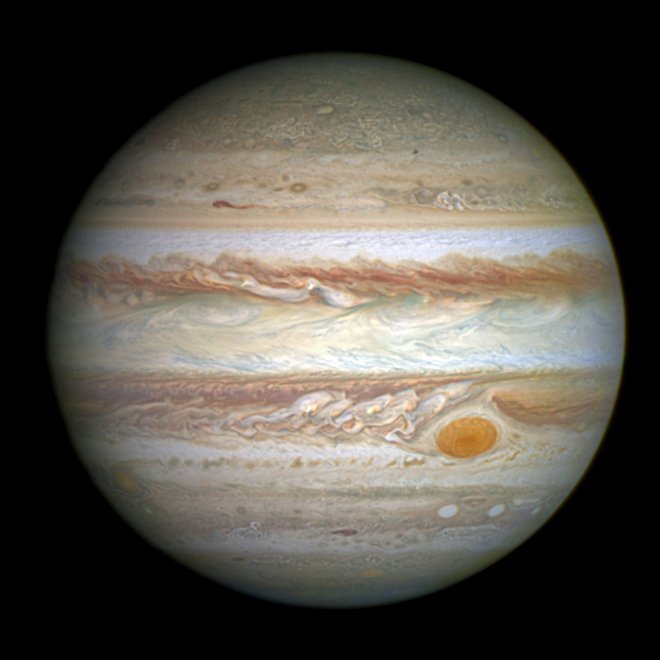Jupiter's Great Red Spot Is Growing Taller As It Shrinks... and Turning Orange
Jupiter's Great Red Spot has been shrinking for a century and a half, and in recent years it has turned a deep orange color. Scientists are tracking these changes to see how the iconic spot is morphing, as well as how it might break apart altogether in the future, according to a new study.
A team of researchers created a timeline for the diminishing cyclone by looking at archived observations of the Great Red Spot, according to a recent statement by NASA. To trace the storm's size, color, drift rate and shape, they combined these historical findings with spacecraft data going as far back as 1979, from the two Voyager missions, as well as data obtained from annual observations conducted with NASA's Hubble Space Telescope by the Outer Planets Atmospheres Legacy project. [Jupiter's Great Red Spot: A Monster Storm in Pictures ]
One surprising finding is that the Great Red Spot is growing taller. This study, led by Amy Simon, planetary atmospheres expert at NASA's Goddard Space Flight Center in Greenbelt, Maryland, found that the diameter of the storm is shrinking, but its clouds are stretching upwards.
"It's almost like clay being shaped on a potter's wheel," NASA official Elizabeth Zubritsky said in a recent statement about the findings. "As the wheel spins, an artist can transform a short, round lump into a tall, thin vase by pushing inward with his hands. The smaller he makes the base, the taller the vessel will grow."

Jupiter's Great Red Spot is thought to have been so large that at one point it could have contained three Earths inside its width, according to NASA. As of April 3, 2017, the storm was 10,159 miles (16,350 kilometers) wide, slightly wider than Earth's diameter.
Researchers don't know why the storm has become more intensely orange since 2014, but suggest it's possible that the growing height of the Great Red Spot might be the cause. As the storm stretches upward, the chemicals that give color to the storm might reach higher in the atmosphere, where they would receive more UV radiation from the sun and therefore darken.
"If the trends we see in the Great Red Spot continue, the next five to 10 years could be very interesting from a dynamical point of view," said Rick Cosentino, co-author of the study and postdoctoral fellow at Goddard. "We could see rapid changes in the storm's physical appearance and behavior, and maybe the red spot will end up being not so great after all."
Get the Space.com Newsletter
Breaking space news, the latest updates on rocket launches, skywatching events and more!
The study was published on March 13 in the Astronomical Journal.
Follow Doris Elin Salazar on Twitter @salazar_elin. Follow us @Spacedotcom, Facebook and Google+. Original article on Space.com.
Join our Space Forums to keep talking space on the latest missions, night sky and more! And if you have a news tip, correction or comment, let us know at: community@space.com.

Doris is a science journalist and Space.com contributor. She received a B.A. in Sociology and Communications at Fordham University in New York City. Her first work was published in collaboration with London Mining Network, where her love of science writing was born. Her passion for astronomy started as a kid when she helped her sister build a model solar system in the Bronx. She got her first shot at astronomy writing as a Space.com editorial intern and continues to write about all things cosmic for the website. Doris has also written about microscopic plant life for Scientific American’s website and about whale calls for their print magazine. She has also written about ancient humans for Inverse, with stories ranging from how to recreate Pompeii’s cuisine to how to map the Polynesian expansion through genomics. She currently shares her home with two rabbits. Follow her on twitter at @salazar_elin.









